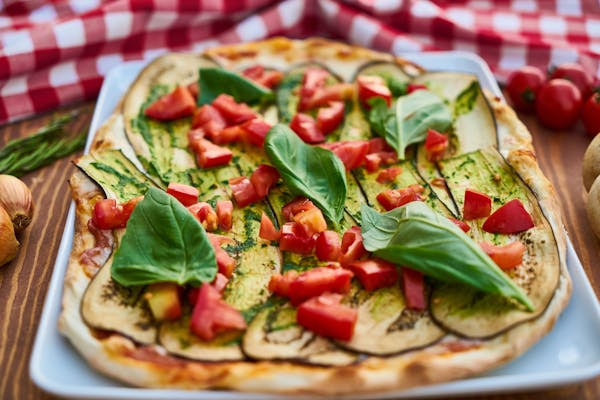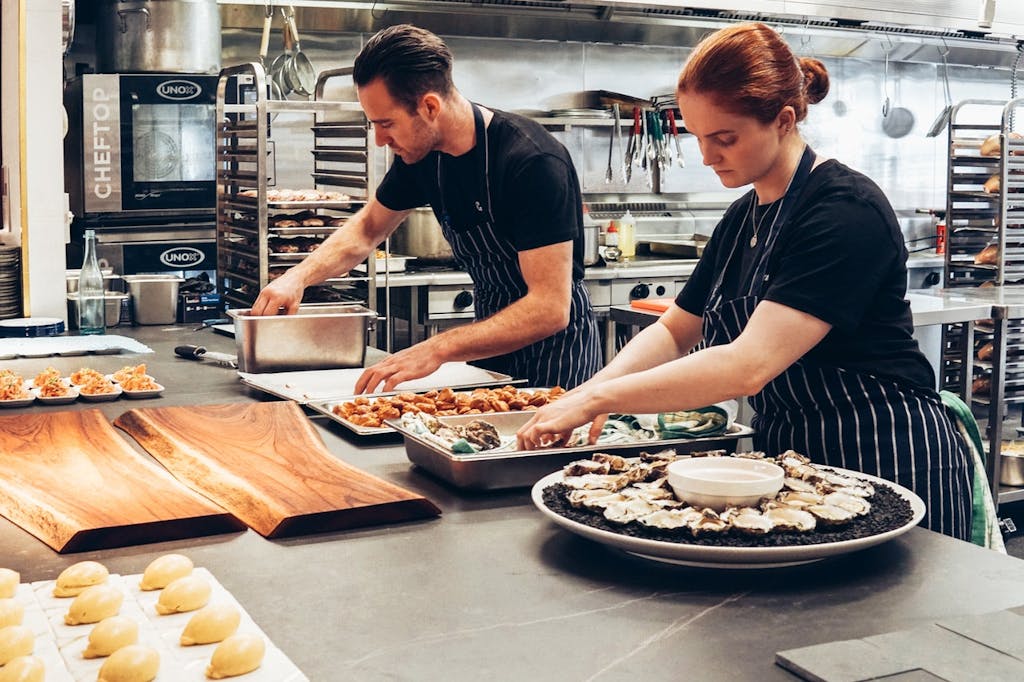How to make a bone-in Easter lamb for garlic lovers
[ad_1]
Mary had a little lamb.
Her brother, Joey, had some, too. Mom and Dad enjoyed their portions. And Uncle Patrick, well, after he devoured his two slices, he did a number on that bone.
Each year, so it goes at Easter dinner tables. Lamb is often the centerpiece; it’s a centuries-old tradition. In addition to the animal protein, we sup on a significant symbol.
Christians name the Easter Jesus “the Lamb of God,” hearkening back to the practices of the people from whom Christians descended, the Hebrew people, for whom sacrificial animals, lambs among them, played key roles.
Burnt offerings at the Temple in Jerusalem, Abraham’s happy replacement of a lamb for his son Isaac, the marking in lamb’s blood of the lintels of the houses of the Jews when fleeing Egypt so that the angel of death would “pass over” their homes — the lamb figured hugely in the history of the Jewish people.
No wonder that, two millennia ago, the newly forming Christian people would latch on to the lamb as the symbol for the person whom they believed sacrificed himself for them. And so, the lamb perdures as centerpiece to Easter, both as symbol and as food.
The recipe here is for a roast of bone-in leg of lamb, mightily accompanied by lamb’s aromatic handmaiden, garlic. Much garlic, sure, but all of which cooks into soft pockets of pleasure in the meat itself, as well as into nuggets of “nutty butter” cast among the bed of vegetables and citrus.
The second recipe, for gremolata (a mix of garlic, lemon zest and parsley), traditionally tops the braised veal shank dish called osso buco, but it’s delicious scattered over this Easter dinner plate. A wee bit more garlic, here raw, more citrus, more spring green.

Easter Lamb for Garlic Lovers
Adapted from americanlamb.com. Serves 4-6.
Ingredients
- 1 bone-in leg of lamb, 4-5 pounds
- 1 tablespoon plus 2 teaspoons kosher or sea salt
- 2 teaspoons freshly cracked black pepper
- 12 cloves of garlic, peeled and cut in half plus 10 cloves of garlic, whole, peeled
- 1 teaspoon plus 2 tablespoons extra virgin olive oil
- 4 pounds Yukon Gold potatoes, partially peeled and quartered
- 2 lemons, cut into eighths
- 3 teaspoons dried thyme leaves
- 1 heaping tablespoon fresh rosemary needles, roughly cut up
- 2 cups chicken stock
- 1/4 cup fresh lemon juice
- 1/4 cup “light” apple juice or dry white wine
Directions
Using a very sharp, thin blade, prepare the lamb by removing as much as possible of the fell (the membrane-y, fatty outer tough layer). Also, trim the fat cap so that it is no more than 1⁄4-inch thick. Using a paring knife, make 24 inch-deep punctures all around the leg.
Rub the leg with 1 teaspoon of the olive oil, 2 teaspoons salt and 1 teaspoon pepper. Place 1⁄2 clove of garlic inside each puncture. Place in a large, zippered plastic bag or otherwise cover and refrigerate the lamb overnight.
Heat the oven to 350 degrees. In a small bowl, combine the remaining 1 tablespoon salt, 1 teaspoon ground pepper, the thyme and rosemary. In a large, deep roasting pan, toss the potatoes, lemon wedges, 10 whole cloves garlic, the 2 tablespoons extra virgin olive oil and 2⁄3 the seasoning mixture in a large roasting pan, coating the potatoes well and evenly. Flatten into a raised bed for the lamb.
Rub the leg of lamb with the remaining spice mixture and place it on top of the potatoes. Pour the chicken stock, lemon juice and white wine or apple juice around the lamb (do not pour directly on top of the meat).
Place in the lower third of the oven and roast until the internal temperature of the lamb leg at its thickest region reaches 130 degrees, about 90 minutes to 2 hours, using a heat-proof ladle to spoon the pan juices over the vegetables every 30 minutes. (Check the leg about 30 minutes before you think it is done to see how it’s coming; you don’t want to overcook it.)
Remove to a cutting board and loosely tent with aluminum foil and let the leg rest for at least 20 minutes. The heat will rise slightly and the juices will return to the center.
Carve and serve with a vegetable of your choice, everything lightly sprinkled with gremolata.
Gremolata
The traditional recipe calls for the three ingredients to be very finely chopped, minced or even micro-planed or ground. Instead, if the lemon zest is in wee strips and the parsley and garlic are merely minced, the ingredients will stand out distinctly and, hence, will be more decorative. Makes scant 1/2 cup.
Ingredients
- Zest of 1 large or 2 small lemons, yellow zest only (no white pith), in very small strips
- 1 large clove garlic, minced
- 1 cup loosely packed flat-leaf parsley leaves (no stems), washed, dried, finely chopped
Directions
In a small bowl, combine the three ingredients, tossing them together with the tines of a fork so that they are loosely gathered.
Note: Gremolata is delicious in many applications: as a topping for many warm soups or stews, on avocado toast, over grilled fish or beef, sprinkled on roasted vegetables, poached eggs and various risottos, incorporated into pasta, bean or potato salads and secreted under the loosened breast and thigh skin of a chicken prior to roasting. Mixed with a small amount of extra virgin olive oil and some citrus juice, it makes for an excellent marinade.
Subscribe to our weekly newsletter, In The Know, to get entertainment news sent straight to your inbox.
[ad_2]
Source link




:max_bytes(150000):strip_icc()/types-of-engagement-ring-settings-guide-2000-86f5b8f74d55494fa0eb043dee0de96e.jpg)

